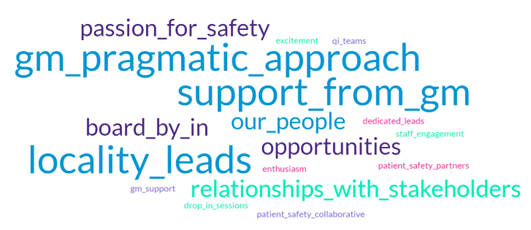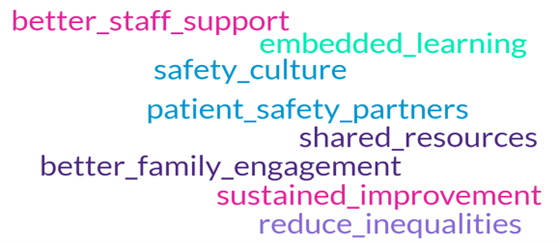16 Apr 2024
PSIRF GO Live Week: Reflections from a Regional Level

As part of the Patient Safety Collaborative System Safety Workstream, we have developed a trio of blogs to coincide with the Patient Safety Incident Response Framework (PSIRF) going live in most organisations this month. In this blog, Kate Povan, Greater Manchester ICB Patient Safety Specialist, talks about everything leading up to PSIRF from a regional perspective and prior experiences of patient safety at this level.
Working under the Serious Incident Framework 2015 at a commissioning level I was responsible for the quality assurance of serious incident investigation reports and monitoring of improvements. We did see the reduction in harm for a lot of serious incident types, but the recommendations within the reports were repetitive and the process overly bureaucratic, it did not put the resource where it was needed – on embedding the learning. The quality of the investigations from one provider to the next also varied greatly and time was spent improving reports as opposed to improving safety. The patient and family/carer voice was also not evident.
PSIRF and the Patient Safety Strategy changes all of that, this is not about the implementation of a new framework this is fundamentally a patient safety culture change. It gives us new tools and a different lens to look at patient safety through- it changes the relationship between commissioners and providers, moving us into a different space.
It isn’t just for NHS Trusts- it is for everyone. PSIRF isn’t just paperwork—it’s about making healthcare safer for everyone.
For me and my Team it has meant a lot of reading has been needed! PSIRF comes with a lot of guidance documents!
In all seriousness as we formed as a ICB we were also moving from the old world of serious incidents into the new world of PSIRF. Relationships with our providers was key especially as we navigated how to move from a quality assurance accountability model to a patient safety oversight model. The culture change and the hearts and minds campaign needed to support that move is huge.
We are moving into a more strategic space where we can consider the existing landscape within the GM healthcare system and share insight and thinking about how the whole system can improve the effectiveness of patient safety functions. However we are also closing down the old world of serious incidents, almost double running to some extent.
With the advent of the Learning from Patient Safety Events Service (LFPSE) as commissioners we have gone form being able to see 1 piece of the patient safety picture to the entirety of this which is a little daunting.
I am very excited though and have been waiting for this for a while- I think that this is the game changer for patient safety.
In the PSIRF world we talk about the journey a lot and that feels apt. The guidance is there – but it is just that guidance and at ICB level we have a role in interpreting this particularly for our independent sector providers and within the primary care landscape.
We need to be able to fully utilise the intelligence from LFPSE, and introduce machine learning to support this.
We want to develop a strategic approach for critical system-wide patient safety issues rather than the delivery of workstreams, we cannot do this alone and we want to work with all of our safety partners to fully realise our ambition.
I am really impressed with the Patient Safety Incident Response Plans developed and published by our providers and the positivity of the GM Patient Safety Movement. It feels like the relationships have changed and we are having much more transparent conversations about patient safety.
The opportunities for shared learning and collaborative working harnessing the expertise and experience of our partners in Health Innovation Manchester and our NHS Trusts to support learning across the sector is quite exciting.
We asked our providers from NHS Trusts and Independent Sector Providers what they thought of PSIRF using the SOAR Model (Strengths, Opportunities, Aspirations, Results). The section below brings together all GM providers views on the implementation of PSIRF in line with this model.






